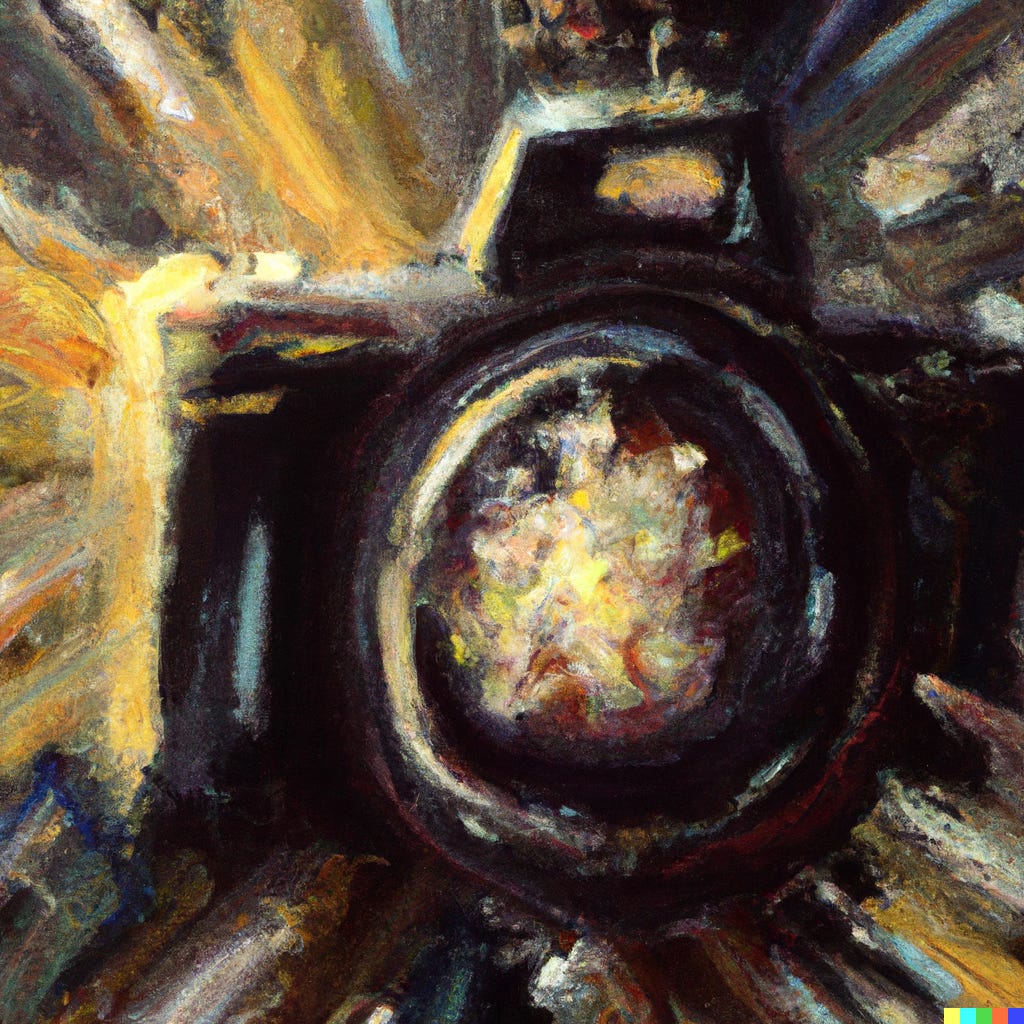How would you define “art”?
What does your definition include? And what does it exclude?
Know that if you’re finding it hard, you’re not alone. Having asked several of my close friends this question recently I found that despite their themes of ‘humanity’, ‘expression’ and ‘intention’, they had no universal answer.
Which makes it tempting to label art ‘subjective’ and get on with it.
But, that seems a little too simplistic.
So instead, I suggest we turn to Britannica’s definition:
“Art is a visual object or experience consciously created
through an expression of skill or imagination.”
Which, I believe is a rather complete answer. Especially when we break down the sentence into it’s three distinct yet overlapping elements:
1) ‘A visual object or experience’
This is the end product of your art that other human beings can see, feel and interpret. Some forms like paintings, books or buildings are obvious. Others like events, brands and businesses are more ethereal. Deciding which form to create often comes down to The Magnum Opus you’re directed towards.
2) ‘Consciously created’
Art requires intention. It is not mindless or lacking in consideration. Instead, there is a feeling that a person has spent a great deal of time, energy and care crafting the end result. No matter whether it’s in the detail of the work or the emotion, story or meaning behind it, there is a purpose to the creation.
3) ‘Through an expression of skill or imagination’
Art isn’t easy. And it isn’t supposed to be. For the process of producing it requires you to become competent at your means of expression. We can often tell when there is little skill or imagination involved, because the creation feels within the reach of us mere mortals.
Pick-up Your Tools
Every painter has a brush.
Every writer has a keyboard.
Every photographer has a camera.
Each is a tool of expression that the artist uses to showcase an experience of humanity that others can see, feel and interpret.
But, it doesn't matter if the end result we interact with is a painting, a book, a video, an event or even a virtual reality.
For all of them can showcase the same experience.
Albeit in their own, unique ways.
What does matter is that you, the artist, has the means by which to turn the ideas that rattle inside your skull into a reality that others can understand.
Whether it’s by picking up:
An instrument you were grade 6 in.
A camera you got for your 18th birthday.
A dance style you only show yourself.
A paintbrush you’ve never tried before.
Or even just a keyboard you use everyday.
If it’s new to you then expect begin as we all do - as an amateur.
But, through never-ending self-doubt, long hours and near infinite iterations, slowly and then suddenly you’ll begin to realise that you’re now pretty good.
(as long as you’ve listened to and incorporated feedback).
And over time what was once hard will now become easy.
The struggle with your tool will be in the past. And instead it will feel like an extension of your mind, effortlessly bringing to life your imagination.
While you might have already created some lower effort art to test your abilities, attract an audience and mark your progress (see here), your newfound mastery will enable you to consciously create a visual object or experience on a level that is unparalleled to your previous work.
It’ll be a challenge. It always is.
But, the end result will be satisfying beyond belief.
That is if you ever find the courage to publish is as complete.




